Abstract
The presence or absence of a Babinski sign can be puzzling, but in the light of existing pathological studies it is more fruitful to consider which pyramidal tract fibres release it than whether they release it. This was investigated clinically, by looking for correlations with other reflex changes and with motor deficits in the leg. A survey of 50 patients with a unilateral Babinski sign and six patients who lacked it in spite of other pyramidal tract signs was supplemented with follow-up of the patients who had acute lesions. Appearance of the Bibinski sign proved to depend on the interaction of two factors: (1) activity (not necessarily hyperactivity) in the segmental pathways of the flexion synergy; (2) a motor deficit of the foot, in some cases consisting only in an impairment of rapid foot movements, and probably representing a disturbance of direct pyramidal tract projections to distal motoneurones.
Full text
PDF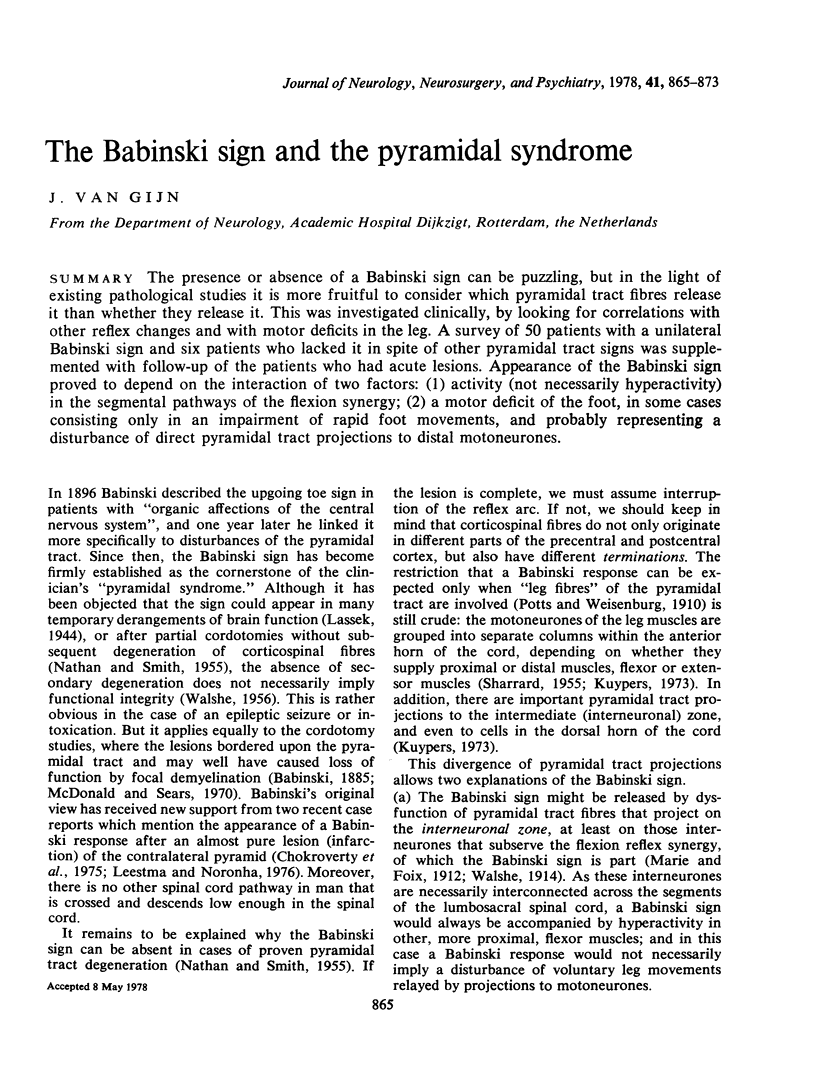
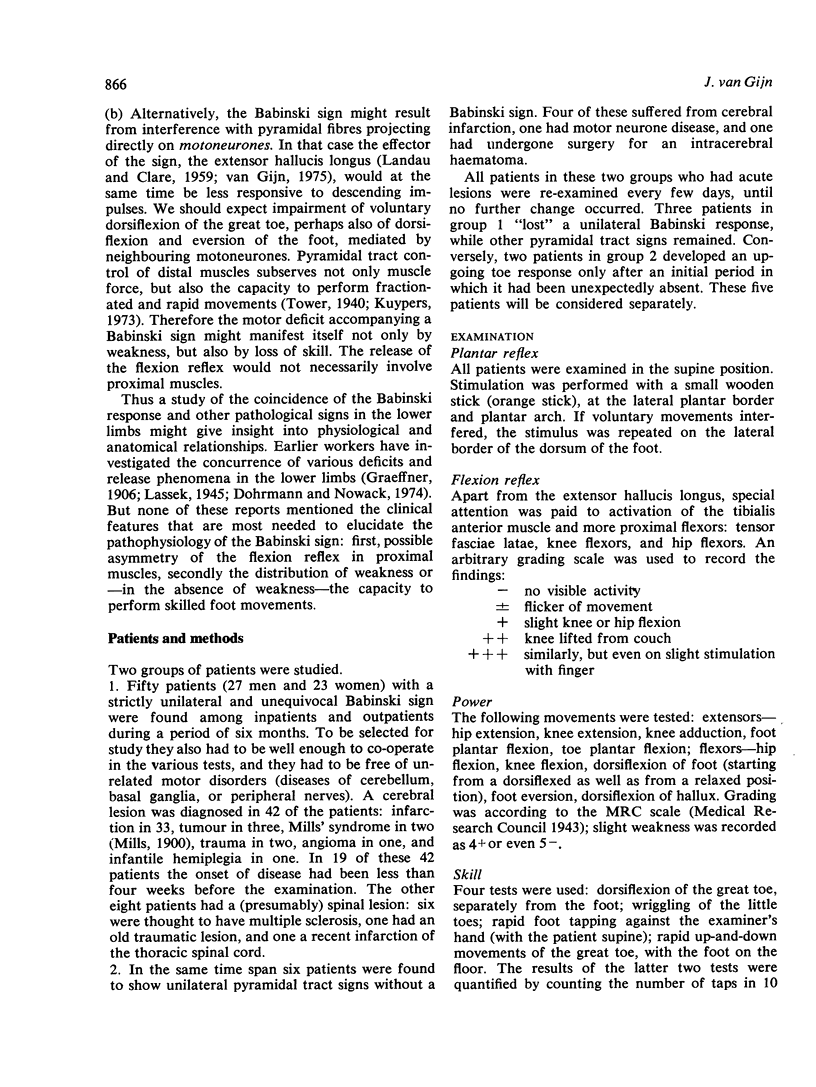
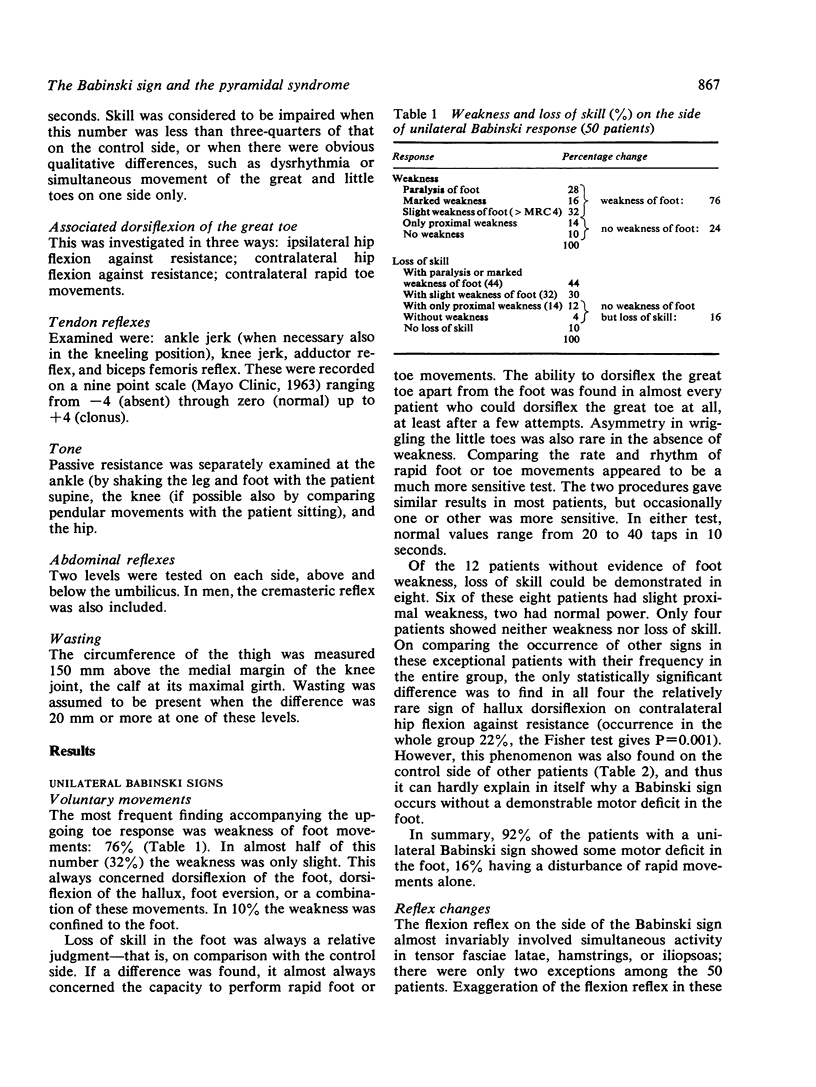
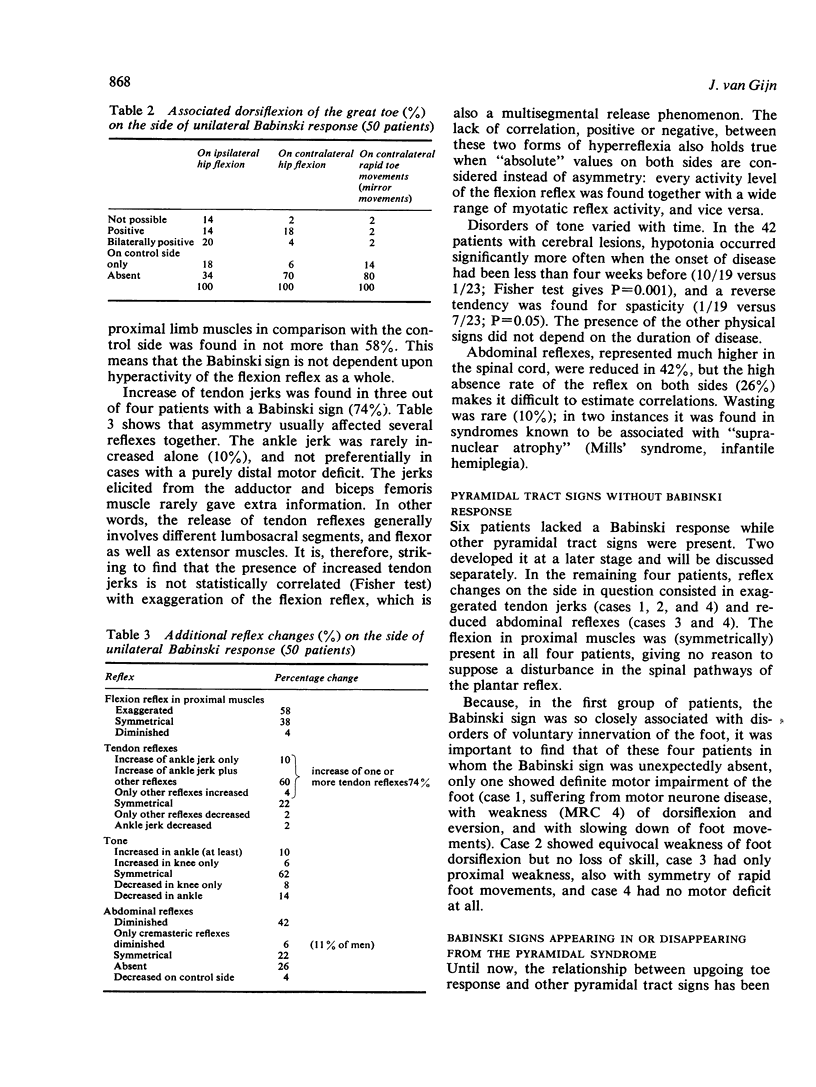
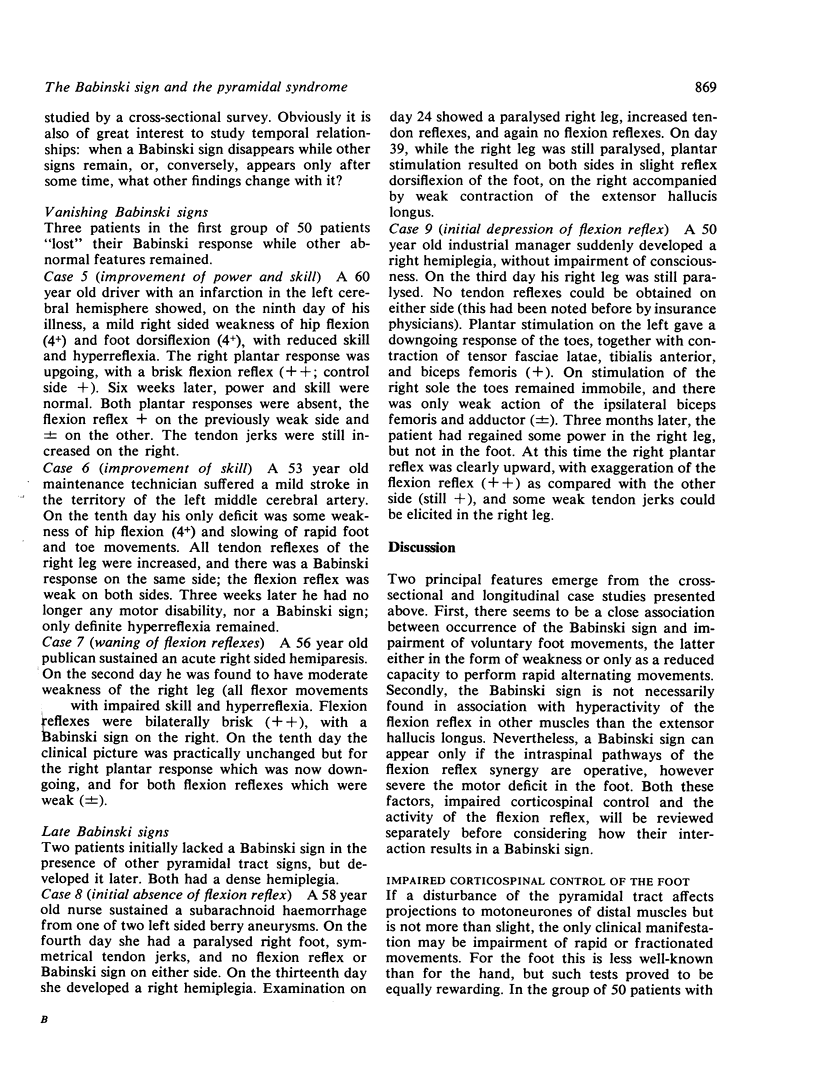
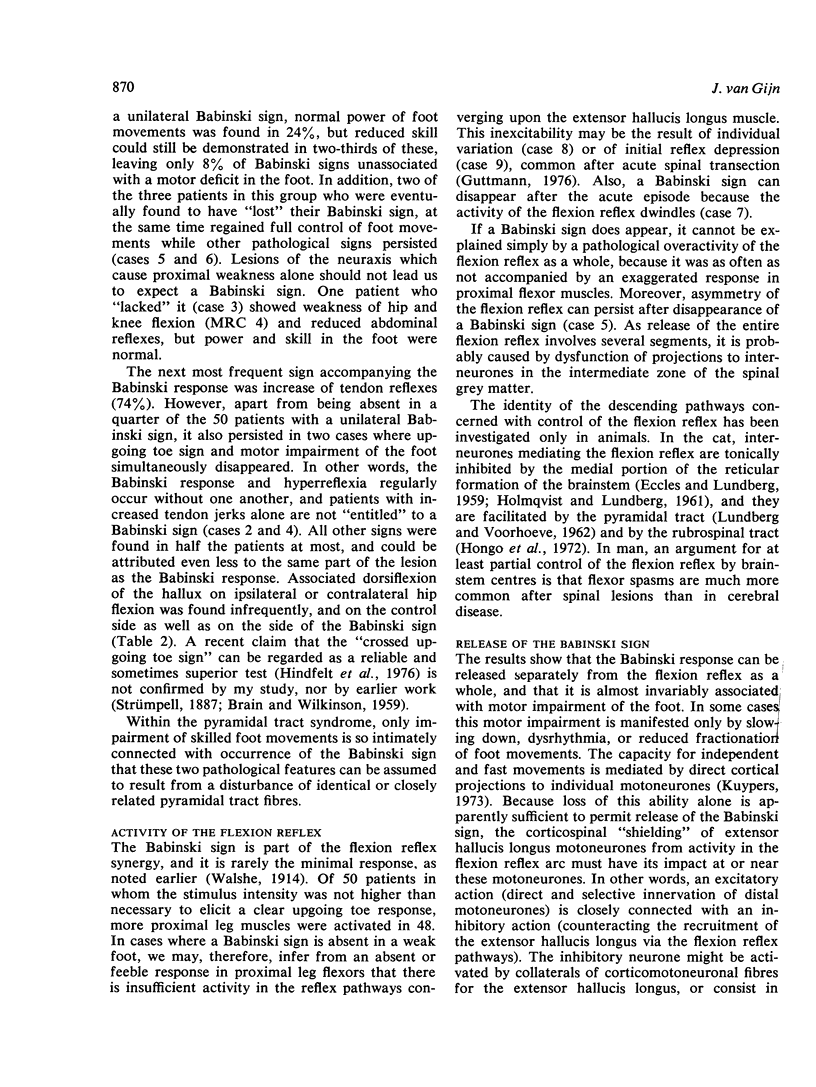
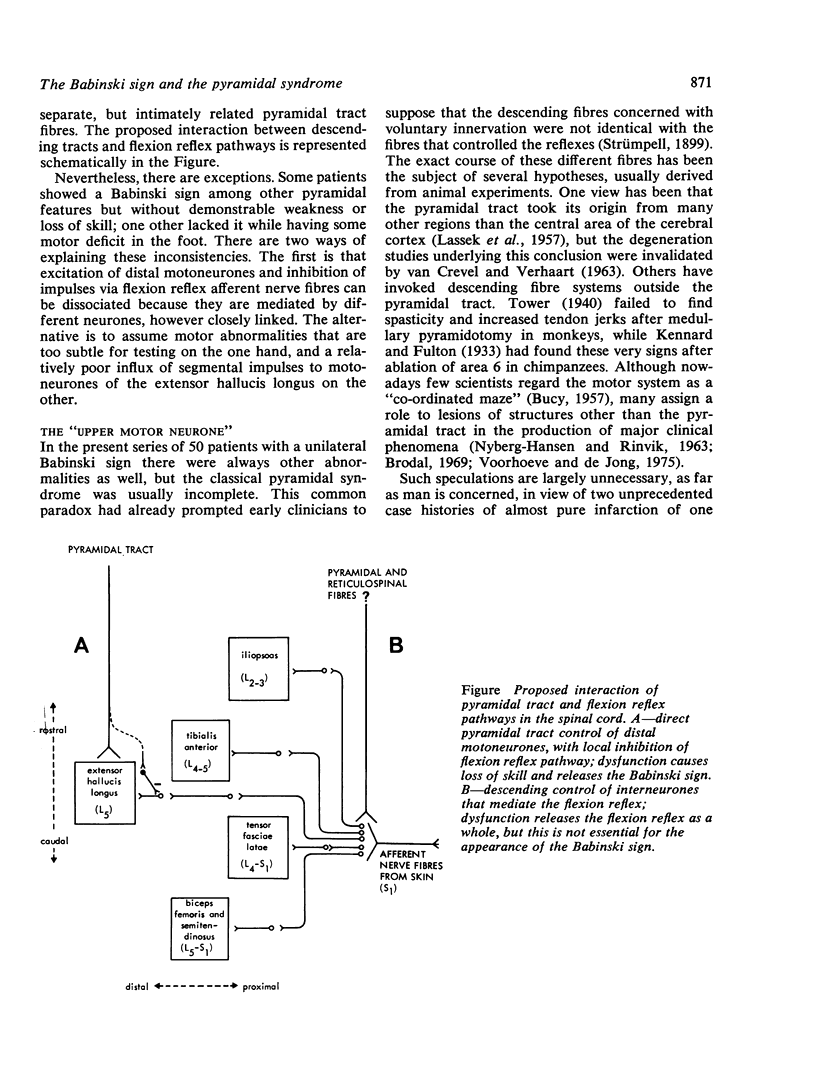
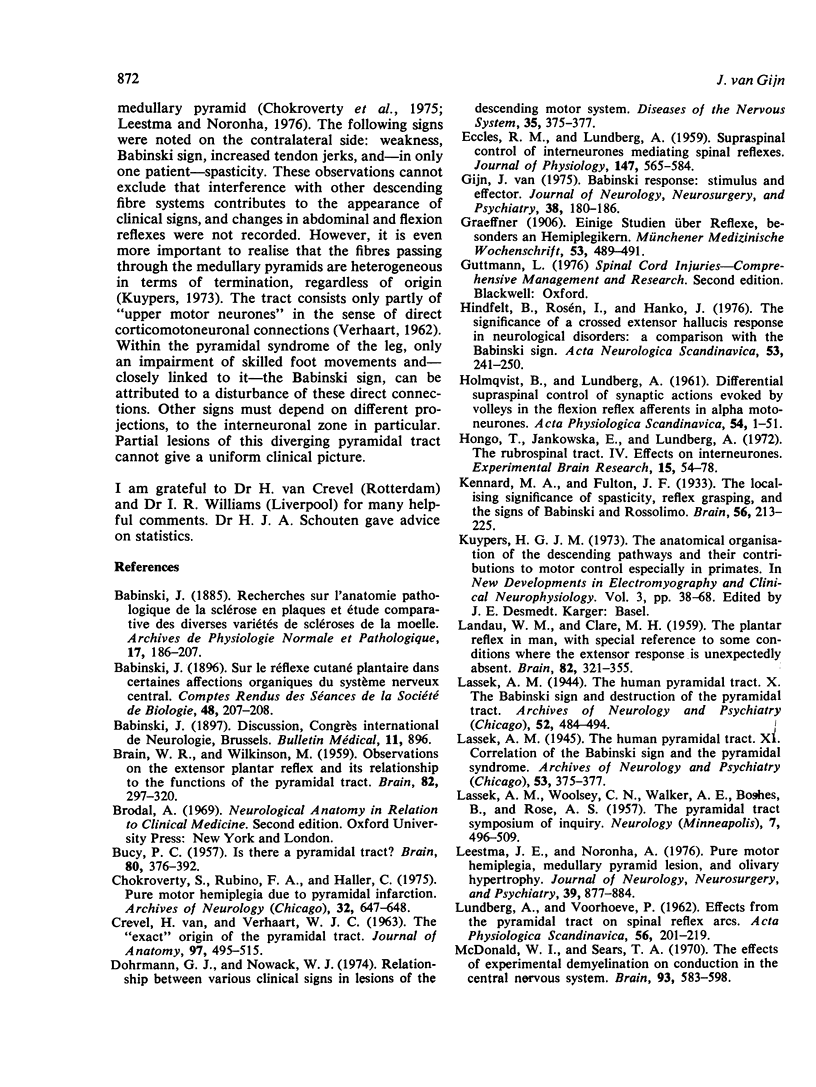
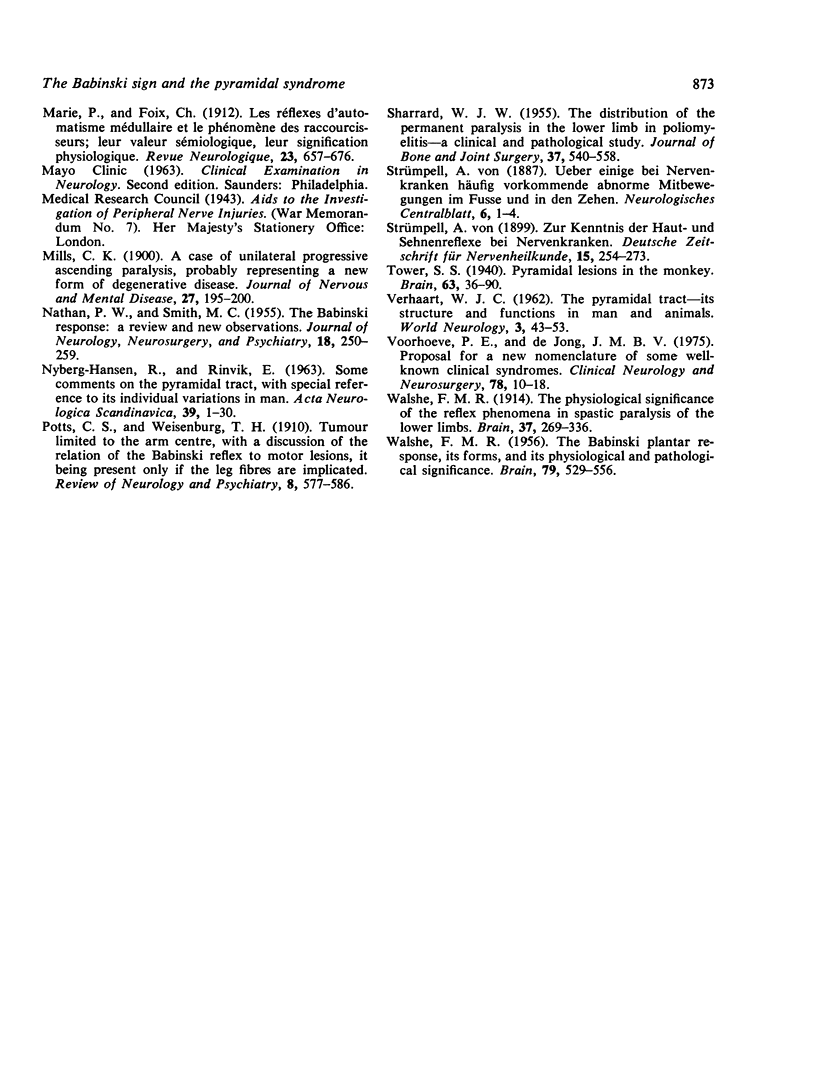
Selected References
These references are in PubMed. This may not be the complete list of references from this article.
- BRAIN R., WILKINSON M. Observations on the extensor plantar reflex and its relationship to the functions of the pyramidal tract. Brain. 1959 Sep;82:297–320. doi: 10.1093/brain/82.3.297. [DOI] [PubMed] [Google Scholar]
- BUCY P. C. Is there a pyramidal tract. Brain. 1957 Sep;80(3):376–392. doi: 10.1093/brain/80.3.376. [DOI] [PubMed] [Google Scholar]
- Chokroverty S., Rubino F. A., Haller C. Pure motor hemiplegia due to pyramidal infarction. Arch Neurol. 1975 Sep;32(9):647–648. doi: 10.1001/archneur.1975.00490510103014. [DOI] [PubMed] [Google Scholar]
- Dohrmann G. J., Nowack W. J. Relationship between various clinical signs in lesions of the descending motor system (a statistical study). Dis Nerv Syst. 1974 Aug;35(8):375–377. [PubMed] [Google Scholar]
- ECCLES R. M., LUNDBERG A. Supraspinal control of interneurones mediating spinal reflexes. J Physiol. 1959 Oct;147:565–584. doi: 10.1113/jphysiol.1959.sp006262. [DOI] [PMC free article] [PubMed] [Google Scholar]
- HOLMQVIST B., LUNDBERG A. Differential supraspinal control of synaptic actions evoked by volleys in the flexion reflex afferents in alpha motoneurones. Acta Physiol Scand Suppl. 1961;186:1–15. [PubMed] [Google Scholar]
- Hindfelt B., Rosén I., Hanko J. The significance of a crossed extensor hallucis response in neurologic disorders: a comparison with the Babinski sign. Acta Neurol Scand. 1976 Apr;53(4):241–250. doi: 10.1111/j.1600-0404.1976.tb04345.x. [DOI] [PubMed] [Google Scholar]
- Hongo T., Jankowska E., Lundberg A. The rubrospinal tract. IV. Effects on interneurones. Exp Brain Res. 1972;15(1):54–78. doi: 10.1007/BF00234958. [DOI] [PubMed] [Google Scholar]
- LANDAU W. M., CLARE M. H. The plantar reflex in man, with special reference to some conditions where the extensor response is unexpectedly absent. Brain. 1959 Sep;82:321–355. doi: 10.1093/brain/82.3.321. [DOI] [PubMed] [Google Scholar]
- LASSEK A. M., WOOLSEY C. N., WALKER A. E., BOSHES B. The pyramidal tract. Neurology. 1957 Jul;7(7):496–509. doi: 10.1212/wnl.7.7.496. [DOI] [PubMed] [Google Scholar]
- LUNDBERG A., VOORHOEVE P. Effects from the pyramidal tract on spinal reflex arcs. Acta Physiol Scand. 1962 Nov-Dec;56:201–219. doi: 10.1111/j.1748-1716.1962.tb02498.x. [DOI] [PubMed] [Google Scholar]
- Leestma J. E., Noronha A. Pure motor hemiplegia, medullary pyramid lesion, and olivary hypertrophy. J Neurol Neurosurg Psychiatry. 1976 Sep;39(9):877–884. doi: 10.1136/jnnp.39.9.877. [DOI] [PMC free article] [PubMed] [Google Scholar]
- McDonald W. I., Sears T. A. The effects of experimental demyelination on conduction in the central nervous system. Brain. 1970;93(3):583–598. doi: 10.1093/brain/93.3.583. [DOI] [PubMed] [Google Scholar]
- NATHAN P. W., SMITH M. C. The Babinski response: a review and new observations. J Neurol Neurosurg Psychiatry. 1955 Nov;18(4):250–259. doi: 10.1136/jnnp.18.4.250. [DOI] [PMC free article] [PubMed] [Google Scholar]
- SHARRARD W. J. The distribution of the permanent paralysis in the lower limb in poliomyelitis; a clinical and pathological study. J Bone Joint Surg Br. 1955 Nov;37-B(4):540–558. doi: 10.1302/0301-620X.37B4.540. [DOI] [PubMed] [Google Scholar]
- VAN CREVEL, VERHAART W. J. THE 'EXACT' ORIGIN OF THE PYRAMIDAL TRACT. A QUANTITATIVE STUDY IN THE CAT. J Anat. 1963 Oct;97:495–515. [PMC free article] [PubMed] [Google Scholar]
- VERHAART W. J. The pyramidal tract. Its structure and functions in man and animals. World Neurol. 1962 Jan;3:43–53. [PubMed] [Google Scholar]
- Voorhoeve P. E., de Jong J. M. Proposal for a new nomenclature of some well-known clinical syndromes. Clin Neurol Neurosurg. 1975;78(1):10–18. doi: 10.1016/s0303-8467(75)80003-5. [DOI] [PubMed] [Google Scholar]
- WALSHE F. The Babinski plantar response, its forms and its physiological and pathological significance. Brain. 1956 Dec;79(4):529–556. doi: 10.1093/brain/79.4.529. [DOI] [PubMed] [Google Scholar]


